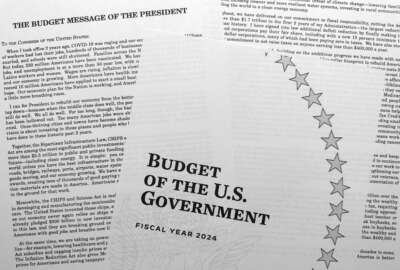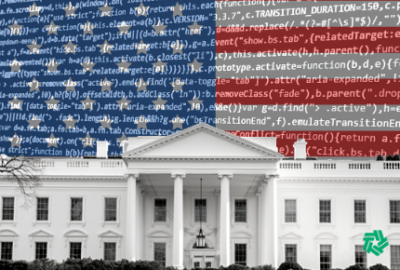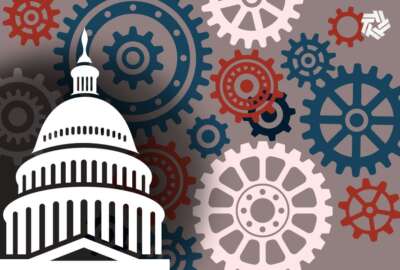Five agencies win $50.5M in new IT, cyber, CX investments
House lawmakers showed little support to provide more funding for the Technology Modernization Fund in fiscal 2024, but the board still has hundreds of millions of...
House lawmakers may have little appetite to give more money in fiscal 2024 to the Technology Modernization Fund, but that’s not stopping the board from spending its current funding as a way to show why keeping its coffers filled is important.
The House Appropriations Committee zeroed out TMF funding in the initial version of the Financial Services and General Government bill. In years past, the House was more willing to provide additional funding than the Senate, leaving the TMF in its usual position of having to prove its value.
The latest awards, totaling $50.5 million to five agencies, are another step in that seemingly never-ending process.
The board’s latest investments, as it likes to call it now, went to the National Transportation Safety Board, the Interior Department’s Bureau of Land Management and the Department of Veterans Affairs for digital services projects with a strong eye toward improving customer experience. The other two awards, to the Department of Labor and the Environmental Protection Agency, are for more traditional IT modernization and cybersecurity initiatives.
“The TMF investments we’re announcing today demonstrate that when we make smart, sound technical investments, we can maximize the impact of taxpayer dollars and propel agencies to work more efficiently and improve service delivery for the millions of Americans counting on them,” said Federal Chief Information Officer Clare Martorana, who also serves as the chairwoman of the TMF board, in a release.
The Biden administration requested $200 million for the TMF in its 2024 budget request. The TMF board received $50 million in 2023 from Congress, and the General Services Administration estimated the TMF would have $401 million in unobligated funds in 2024, down from $879 million in 2023.
The TMF now manages more than $750 million for 45 investments across 27 federal agencies. Of those 45, the board has made 34 of them using the $1 billion it received from the American Rescue Plan Act.
Digital services at NTSB
The NTSB, VA and BLM awards are part of the administration’s continued push to improve customer experience across the government. The board last summer committed to spending $100 million of TMF funding to improve the CX of programs.
The biggest award for CX in this round went to NTSB. It is slated to receive $16.2 million “to build a unified digital experience that makes it easy to find, understand and use information related to investigations and safety recommendations, is backed by comprehensive data sets and includes all related content.”
The TMF board says on its website, the NTSB will improve its digital services by delivering the following core components:
- Digital Asset Management System: Managing NTSB digital assets to make better use of their datasets.
- Document Management and Report Publishing: Reimagining NTSB’s publishing workflows.
- Enterprise Content Delivery: Near real-time sharing of NTSB datasets, including investigation progress.
- Customer Notifications: Providing intuitive search and notification capabilities.
“By helping modernize our agency’s legacy IT systems, this loan will transform how we investigate transportation disasters and deliver critical safety information to the public,” said NTSB Chairwoman Jennifer Homendy, in the release.
The Bureau of Land Management is expected to receive $9.2 million from the board “to increase the number of land records available online and enhance the search functionality on its General Land Office (GLO) website.”
The board says the modernization effort will let BLM bring in optical character recognition (OCR) and natural language processing (NLP) that will help decrease by 80% the time it takes for BLM staff to publish land records.
“Users will benefit from improved efficiency and accuracy of the data retrieved and improved document images through a redesign of the public-facing web application,” the board says. “With TMF funding and support, BLM is taking an agile approach to increase the number of land records available online and enhance the search functionality on the GLO website. The first phase of the project focuses on applying machine learning to optimize records indexing. In phase two, GLO will integrate with other BLM applications to create a land records ecosystem. In phase three, GLO will become fully operational on the BLM’s Mission Services Platform, a software platform consisting of ESRI, Salesforce, DocuSign, Tableau, Mulesoft, Microsoft Powerapps and other enterprise software platforms.”
Mitchell Leverette, BLM Eastern States State Director, said in the release that the records are vital to near every decision BLM makes.
“This project enhances the BLM’s capability to efficiently digitize land records and provide a complete online tool with integrated GIS features that is easy for the public, industry and our federal partners to use when making resource decisions that support hundreds of thousands of jobs and contribute billions of dollars to our nation’s economy,” she said.
This is Interior and NTSB’s first TMF awards.
VA’s second TMF ward
The third investment to improve CX and digital services is for $7.4 million at VA.
The board says it will help VA “tackle the digitization of forms at scale using a centralized approach with improved personalization and better visualization of key information. This aims to help modernize the user experience by eliminating repetition and making clinical and other decisions easier for VA health care providers, resulting in better health and other veteran benefit outcomes.”
The legacy system requires veterans to enter the same information into different forms over and over as well as requiring VA workers to use several disparate systems to process those forms.
“The path to digitization has been slow and expensive, requiring an estimated average six weeks of development time and hundreds of thousands of dollars per form. A backlog of hundreds of forms remains undigitized,” the TMF board says. “With TMF funding and support, VA will tackle the digitization of forms at scale using a centralized approach with improved personalization and better visualization of key information. This represents a significant step forward in modernizing the user experience by eliminating repetition and making clinical and other decisions easier for VA health care providers, resulting in better health and other veteran benefit outcomes. VA anticipates a 50% or greater reduction in the cost of digitizing a form, which VA estimates to be an average of $500,000 per form. VA also anticipates a customer savings of 2.5 days per VA customer per form over the effort required by paper forms. Finally, VA expects to reduce custom code by at least 20% which would eliminate the costs of maintaining that code as technical debt, estimated to be $500,000 per year.”
This is VA’s second TMF award.
Cyber investments remain popular
The two IT modernization and cyber investments continues the TMF board’s support of the main reason why Congress created it in the first place.
In receiving its fourth TMF award, Labor is slated to receive $15.2 million “to accelerate the implementation and deployment of a cloud-based security framework to provide connectivity, consistent security and optimized user experience to its employees, partners and the public.”
The initiative includes the move to secure access service edge (SASE) capabilities to improve the security for users and applications.
“This project aims to protect our digital assets from increasingly sophisticated adversaries by implementing an architecture based on continuous evaluation of the trustworthiness of each connection, while enabling secure access to authorized users in the office, on the road or at home,” said Paul Blahusch, Labor’s chief information security officer in the release.
Finally, EPA is expected to receive $2.5 million to accelerate the security modernization of its Analytical Radiation Data System (ARadDS). It requires hardware upgrades, network security remediation, automation and IT tools, a vendor supported Laboratory Information Management System and additional IT to improve how it manages and remediate more than 3,000 cybersecurity vulnerabilities and implements network security processes.
EPA says it will use the TMF funding to “to add contractor personnel and resources to modernize an aging infrastructure and bring the program into agency compliance.”
“This TMF investment will provide continued operation and increased cybersecurity of the only nationwide radiation monitoring system in the United States,” said Jonathan Edwards, director of the Office of Radiation and Indoor Air (ORIA), in the release. “The project addresses critical IT infrastructure modernization and security posture stabilization, and minimizes risk to the availability and integrity of data important to protecting public health and the environment.”
Copyright © 2025 Federal News Network. All rights reserved. This website is not intended for users located within the European Economic Area.
Jason Miller is executive editor of Federal News Network and directs news coverage on the people, policy and programs of the federal government.
Follow @jmillerWFED







